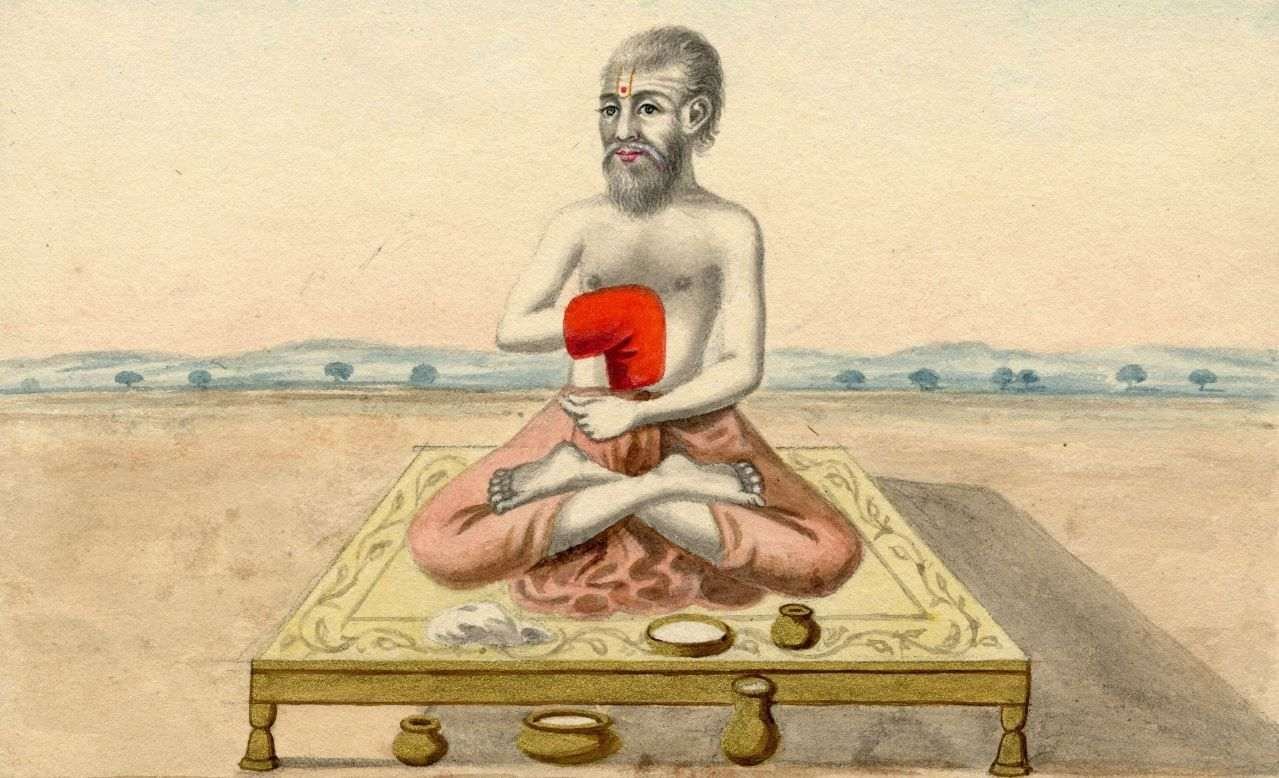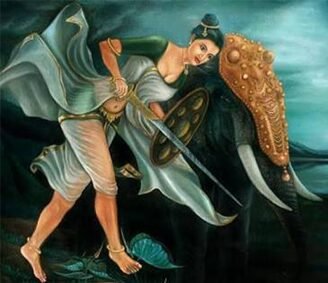Samkhya: The Philosophy of Dualism

Samkhya, perhaps the most ancient school of Indian philosophy, serves as the cornerstone for many spiritual systems-including yoga. This dualistic philosophy divides reality into two basic aspects: Purusha, meaning “consciousness,” and Prakriti, meaning “matter” or “nature.” Samkhya defines Purusha as the passive, unchanging observer of nature, while it defines Prakriti as the moving, creative force of the cosmos. Prakriti develops all of existence from the mind to ego to intellect, giving rise to the cosmos and all within it.

Central to the philosophy of Samkhya has established the doctrine of human suffering and liberation. Unlike those spiritual traditions advocating that one’s liberation comes through collective rituals or divine actions, Samkhya resolves these questions with logical exposition and by exploring the discriminative knowledge (viveka) that brings liberation from the misery of existence by the realization of the distinction between Purusha and Prakriti. After this knowledge, one surpasses the innumerable cycles of birth and death and becomes free.
Its rational and analytic manner deeply influenced classical Indian writings such as the Bhagavad Gita and the Yoga Sutras. Such teaching comes to ground the Indian religious practice and thought with a place for spiritual growth through awareness and discernment rather than through ritualistic acts. This influence still shapes the spiritual traditions that embraced Samkhya both in India and elsewhere.

History of Samkhya Philosophy
Samkhya is amongst the oldest philosophical systems in India, its origin dated as early as the 6th century BCE, possibly even before. Traditionally, it was ascribed to Sage Kapila, known to be the founder of this system and who also posed analytical questions about creation, suffering, and consciousness. It built upon concatenating Vedic thought with elements from pre-Vedic concepts and arose as a response to confronting humankind over life issues.
Samkhya began as a theistic school, admitting more supernatural workings in the world. However, later on, it adopted a non-theistic view, primarily focusing on the rational analysis of reality through the relationship of two elemental components: Purusha (the conscious) and Prakriti (the material). Whereas Purusha comes to mean the witness or observer that is indeed passive and stationary without any transformation as opposed to Purusha, Prakriti represents the eternal dynamic creative power from which all forms and experiences of the material world arise. By identifying the activity of Purusha and Prakriti, Samkhya hopes to clarify the nature of suffering as well as shed some light on the path one must take to attain release.
Further to this, the system of philosophy laid by Samkhya strongly directed the furtherance of Yoga, impacting the Yoga Sutras of Patanjali which are regarded to provide the general theory. During the Gupta period (4th to 6th centuries CE), the growth of Samkhya was at its peak with the teachings getting included in the sacred text of Bhagavad Gita and Mahabharata; however, with the progress of Indian philosophy, some splinters appeared, with Vedanta eventually assuming its position at the right-of-way over Samkhya, assimilating certain ideas yet condemning this as a dualistic approach.
While as a school of thought, it may no longer hold any significance, truth be told, the legacy of Samkhya still stands tall, more so in the field of modern-day Yoga or the domain of Indian metaphysical dialogue to provide ceteris paribus interpretative directions through logical preoccupations with those very controversies surrounding consciousness and liberation-equally enticing and fruitful in inputting investigate into spiritual seekers across the globe.

Writers and Texts of Samkhya Philosophy
Several important texts and scholars are behind the evolution of Samkhya. The early texts underscore dualism, cosmology, and liberation through knowledge.
- Sage Kapila: Traditionally, Kapila is regarded as the founding sage of Samkhya philosophy. While there do not exist any primary texts that can be, with assuredness, called his original works, teachings developed by him have survived through oral tradition and subsequent commentaries.
- Samkhya Karika: The most authoritative presentation of Samkhya was composed by Ishvarakrishna in the 4th century CE. The Samkhya Karika presents in a succinct form, of 72 verses, the philosophy in a systematic exposition of the theory of Purusha, Prakriti, and the evolution of the cosmos.
- Tattva Samasa: This comparatively shorter work deals with the classification of reality. It explains the Samkhya system utilizing the interactions among the 25 tattvas, or principles of existence.
- Bhagavad Gita: Samkhya has many concepts taken from the teachings of the Bhagavad Gita. Although the Gita combines Samkhya with devotional and Vedantic elements, its discussion on the distinction between the self (atman) and the body draws heavily from Samkhya’s dualism.
- Patanjali’s Yoga Sutras: The Yoga system set out by Patanjali, follows Samkhya metaphysics to a large degree, introducing the notion of Ishvara, a personal God. Yoga Sutra’s exposition of mind, consciousness, and liberation resonates with Samkhya inquiry into states of the mind and quest for self-realization.
Verses of Samkhya Philosophy
Samkhya is a particular school of philosophy founded in ancient Indian scriptures, giving profound insights into existence, pain, and the search for liberation.
- “Duhkha-traya-abhighata-ajijnasa” – Samkhya Karika 1
Translation – A desire to remove the threefold suffering is the impetus behind philosophical inquiry.
This line reflects the desire for a spiritual voyage coming out of longing to become free from suffering which Samkhya categorically divides into three forms: self-inflicted suffering, externally produced suffering and supernaturally inspired suffering. It is through understanding these aspects and dealing with them that a human being aspires towards liberation.
- “Purusha is the spectator that is untouched by action.” – Samkhya Karika 19
This quotation conveys the core idea of Purusha as the disengaged spectator. In Samkhya philosophy, Purusha (consciousness) is a timeless observer of existence, while Prakriti (matter) is charged entirely with action and change. Knowledge of this distinction should help people transcend identifying themselves with necessarily transient experiences.
- “The three gunas-Sattva, Rajas, and Tamas-form the basis of Prakriti.” – Samkhya Karika 12
This statement acknowledges the three gunas as the motivating forces of Prakriti. Sattva is equilibrium; Rajas is activity; while Tamas is inertia. The interaction of these essential qualities shapes all mental and physical events affecting emotions, behaviours and consciousness.
- “Knowledge results in liberation.” – Samkhya Karika 2
Liberating (moksha) in Samkhya can be acquired in the first instance through the very awareness that can cleave asunder the difference between Purusha and Prakriti enabling a self-liberated release from the bondage of suffering.
- “The universe is the manifestation of Prakriti’s evolution.” – Samkhya Karika 3
This line states that all experiences of thoughts, feelings, etc., are nothing but specific manifestations of the evolution of Prakriti. Grasping this principle allows one to detach from material distractions and focus on the quest for self-realization.

Legacy and Influence of Samkhya
Samkhya has had effects not just in the philosophical realm; its influence is felt in Hinduism, Buddhism, and Jainism. It set the basis for many spiritual systems, with Yoga standing out, and much contributed to shaping India’s metaphysics and psychology.
For Yoga Philosophy, Samkhya is the epistemological foundation for Yoga, where it provides the metaphysical notions that Yoga wishes to realize through practice. Patanjali’s eight path (Ashtanga Yoga) builds on Samkhya’s dualistic tenets, reinforcing the essentiality of detachment from the physical world.
Within Indian Psychology, the understanding of mind, ego, and intellectual functioning has found some relevance in the Samkhya system concerning the psychological theories later devised in India. The notion that mental anguish arises out of ignorance also dovetails quite nicely with the contemporary understanding of psychology.
Representatives of Jainism and Buddhism indeed accepted from Samkhya its non-theistic viewpoint and its emphasis on liberation through the pursuit of knowledge. Non-attachment to material desires is easily assessable in light of their own teachings on renunciation and enlightenment.
While Samkhya, having moulded Indian philosophy, has come under heavy criticism from Vedanta scholars, who challenge its dualistic standpoint. Vedanta counters that Brahman alone is the truth, therefore considering the separation of Purusha and Prakriti to be an illusion.
Learnings from Samkhya Philosophy
Samkhya’s philosophy maintains that the root of human suffering is the lack of awareness of the difference between Purusha (consciousness) and Prakriti (matter). When one identifies oneself with the impermanent features of life like feelings, ego, and form, he becomes caught in the vicissitudes of sorrow and joy. According to Samkhya, liberation (moksha) can be attained through knowledge (jnana) and by realizing oneself as being above and beyond these material aspects. It is the realization of oneself that would help him to rise above suffering and attain peace in eternity.
Letting Go of Material Desires: Samkhya lays emphasis on the practice of stepping back from worldly impulses and material desires or rather puts forth that real happiness comes not through worldly objects but through the self. Since the material world is impermanent, the ascetics practice personal development, leading to happiness and liberation.
The Three Gunas in Balance: A collation of Samkhya theory pivots on the three gunas of Sattva (equilibrium), Rajas (activity), and Tamas (inertia). These qualities are believed to colour every aspect of life, including human conduct. Balance of the gunas leads to mental clarity and inner peace. This could be promoted by fostering awareness of and affection towards Sattva, matchmaking all the tranquillity, wisdom, and self-control to avail proficiently a steady equilibrium between the mind and body.
Rational Approach to Spirituality: Samkhya is, perhaps, unique and extension in contrast to the other assertions which mainly rely on rituals or divine interference in respect of spirituality that is always subjected to statistical governance. Encouraging a more reasoned and rational approach, Samkhya is substantiated as it attracts a whole myriad of researchers who wish for an analytical route to spiritual development focusing on realisation and self-awareness.
Union Between Body and Mind: The attention of Samkhya to the relationship between the mind and body forms the very basis of many Yoga practices, as in these practices a symbiotic connection between the mental aspect and the physical well-being is a requirement. This integration fosters a comprehensive approach to self-care, where mental clarity and physical health enhance spiritual growth and liberation.
Conclusion
The Samkhya system marked an important step forward in the evolution of Indian thought. It has ever since reflected upon all categories of living: existence, causal factors of human suffering, and liberation. A philosophy based on dualism, Samkhya divides ‘reality’ into Purusha (consciousness) and Prakriti (matter). Purusha connotes the eternal, unchanging observer; while Prakriti is the active, creative force driving cosmic evolution. It is suffering that arises in humans according to Samkhya from taking oneself to be the transitory aspect of Prakriti and not having adequate awareness of one’s true nature or Purusha.
It is certainly eclipsed by Vedanta in the annals of Indian philosophy, nonetheless, the influence of Samkhya is immense, particularly on Yoga and Indian psychology. For the most part, the same notions are echoed in the Yoga Sutras as well as in the Bhagavad Gita, with certain features of discernment and self-consciousness taken from the system of Samkhya. Unlike other orthodox perspectives, which hold righteous action, sacrifices, and divine intervention higher than direct engagement, Samkhya is a structured intellect by which it argues that liberation (moksha) is achieved through the articulation of certain discriminatory understandings (viveka), ranging from a discourse of philosophical inquiry in self-directedness to simply performing the naked ceremonial acts of devotion to the manifestation-intelligence.
While permitting a pragmatic style of living, Samkhya states that through understanding the constitution of reality and oneself will suffering be done away with. Samkhya inspires seekers of truth and presents insights echoed through the various psychological and spiritual practices.


